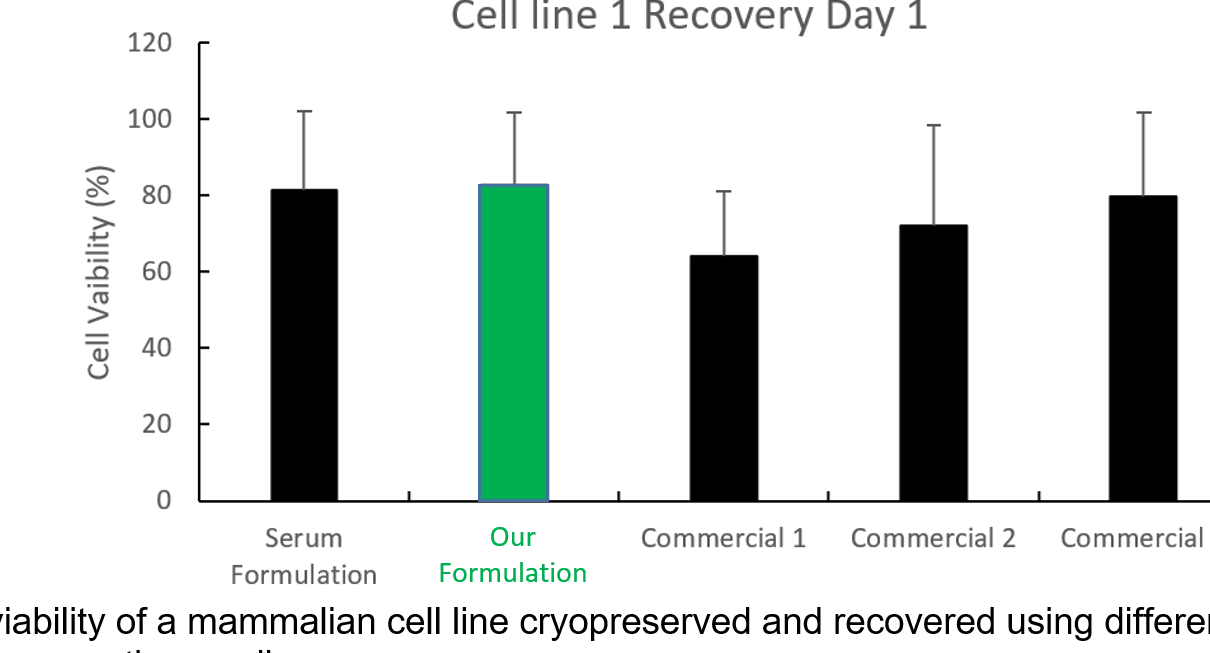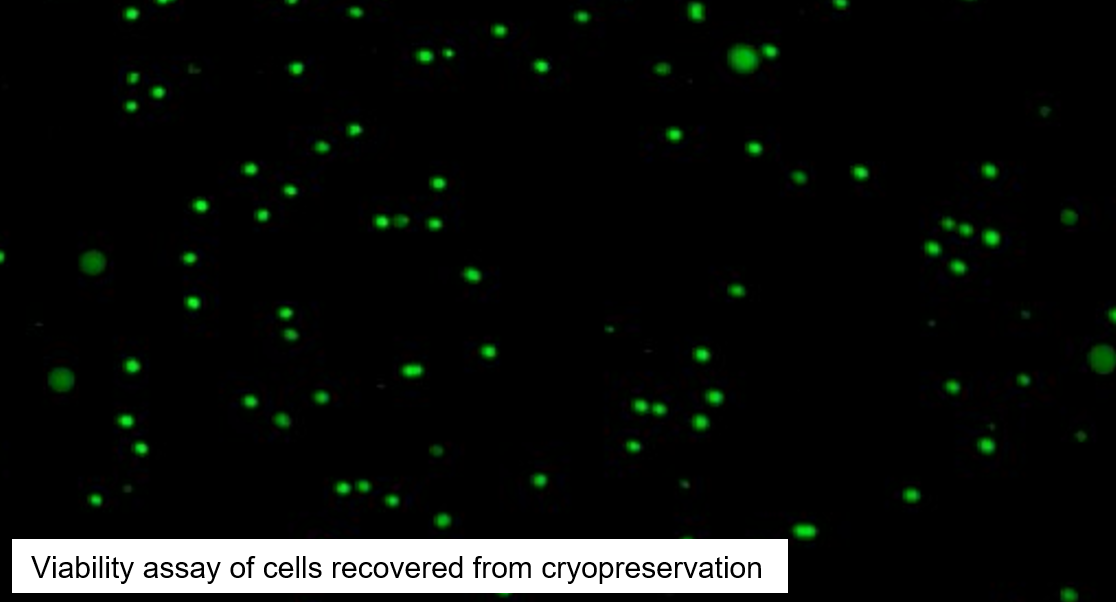Preserving Cells without the Need of Blood Product - Serum-free Cryopreservation


KEY INFORMATION
Life Sciences - Industrial Biotech Methods & Processes
TECHNOLOGY OVERVIEW
The most common cryopreservation media used in laboratories consist of 10% DMSO and 20% to 90% fetal bovine serum (FBS). DMSO was thought to reduce the size of ice-crystals during freezing, thus reducing mortality whereas FBS improves the viability of cells during recovery. Although effective for cryopreservation of most cell types, FBS poised significant risks, including the possible risk of cross-species virus infections such as the “mad cow disease”, as well as the possibility of triggering an adverse immunogenic response from the recipient. Our serum-free cryopreservation formula allows the cryopreservation of mammalian cells without the need for serum.
TECHNOLOGY FEATURES & SPECIFICATIONS
The technology utilise a product from insect cells to replace serum in the cryopreservation media. Since insect cells are very distant from mammals, there is less likelihood of cross-species viral infection.
The formula was comparable to the traditional serum-containing formula commonly used to cryopreserve mammalian cells.
Furthermore, when tested against 3 different mammalian cell lines, our serum-free cryopreservation media has comparable post-thaw cell survival and recovery when comparable to 3 commercially available cryopreservation media.
POTENTIAL APPLICATIONS
- Cryopreservation of cell line for Research and Development (cell culture)
- Cryopreservation of cells for clean meat production
- Cryopreservation of cells for cell banking
- Cryopreservation industry was estimated to be worth USD2.2 Billion globally and cryopreservation reagents are estimated to be worth 20% share of the total value (estimated USD 440 million)
Unique Value Proposition
A novel method in cell preservation without the need for blood product. For the cell preservation industry, preserving cells using this technology could reduce the risk of cross-species virus infections such as the “mad cow disease”, as well as the possibility of triggering an adverse immunogenic response from the recipient.
